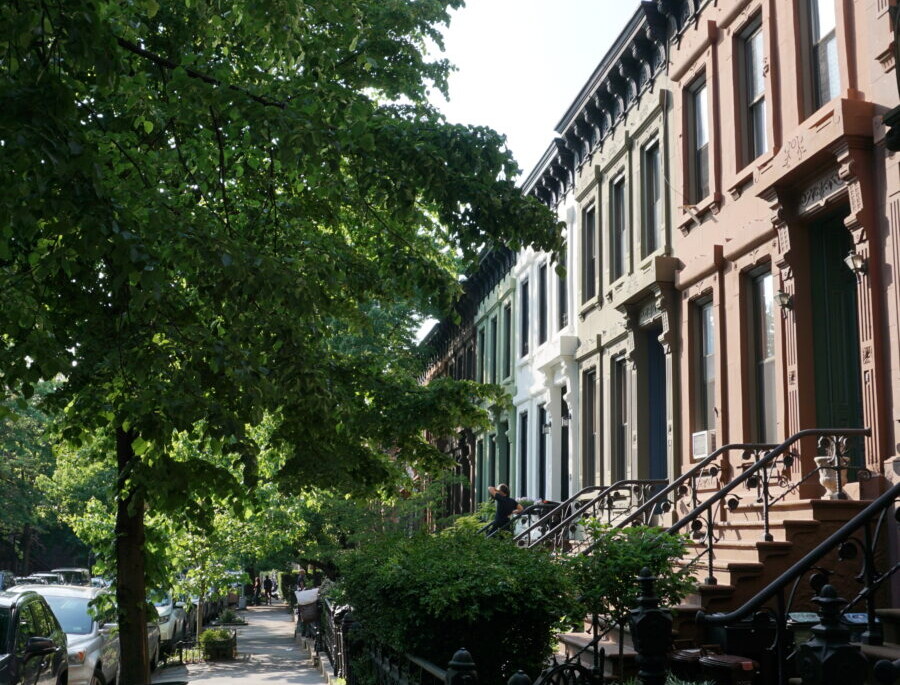ROWHOUSES AT 7TH STREET
441-457 7th St
1887
Charles G. Peterson
By the mid-1870s the simpler Neo-Grec style supplanted the rounded, ornate Italianate, and its later variations, as the preferred style for rowhouses and other residential buildings.
Popular until about 1890, Neo-Grec architecture is characterized by extremely stylized classical details, angular forms, and incised detailing formed by mechanical stone cutting; high stoops with massive, angular cast-iron handrails, fences, and newel posts; massive door hoods and enframements with angular decorative elements resting on stylized brackets; double-leaf wood entrance doors with angular ornament; stylized, angular incised window surrounds; projecting angular bays; and projecting cornices resting on brackets.
The style is the second most popular in the Center Slope, with both rowhouses and flats designed in it.
This group of nine brownstones at 7th Street is an interesting example of Neo-Grec rowhouses. They were developed by Charles G. Peterson, a local builder, and architect who in 1886 had completed two Neo-Grec houses at 7th Avenue (Nos. 360 & 362). He would later build another long row at 7th Street (Nos. 583-603), featuring three-sided bays, high straight stoops, wrought iron hand-railings, and slender cast iron newel posts.
Most of Petersen’s work is located within the Park Slope Historic District, including examples in the Romanesque or Renaissance Revival style, and some Neo-Classical buildings.
